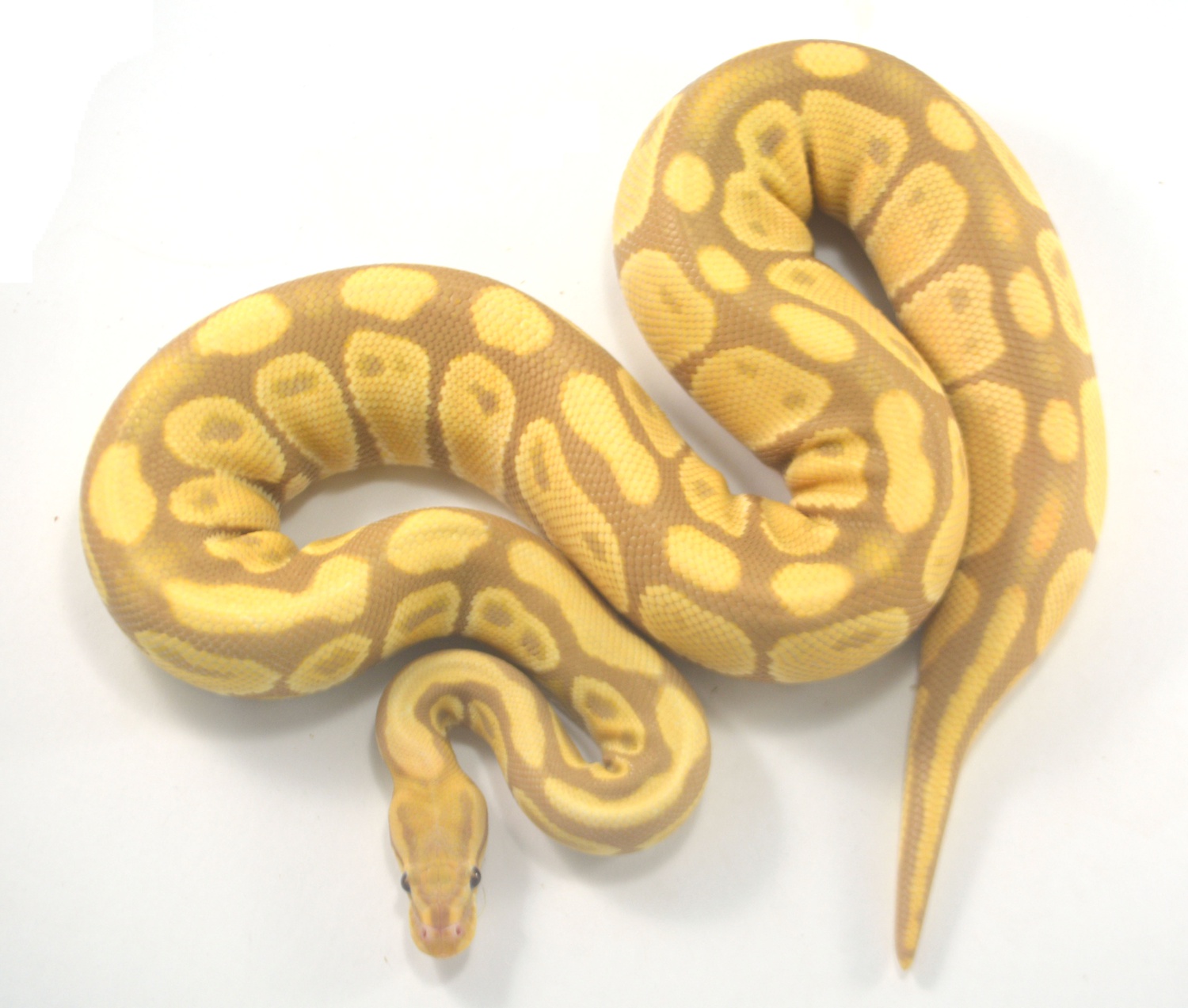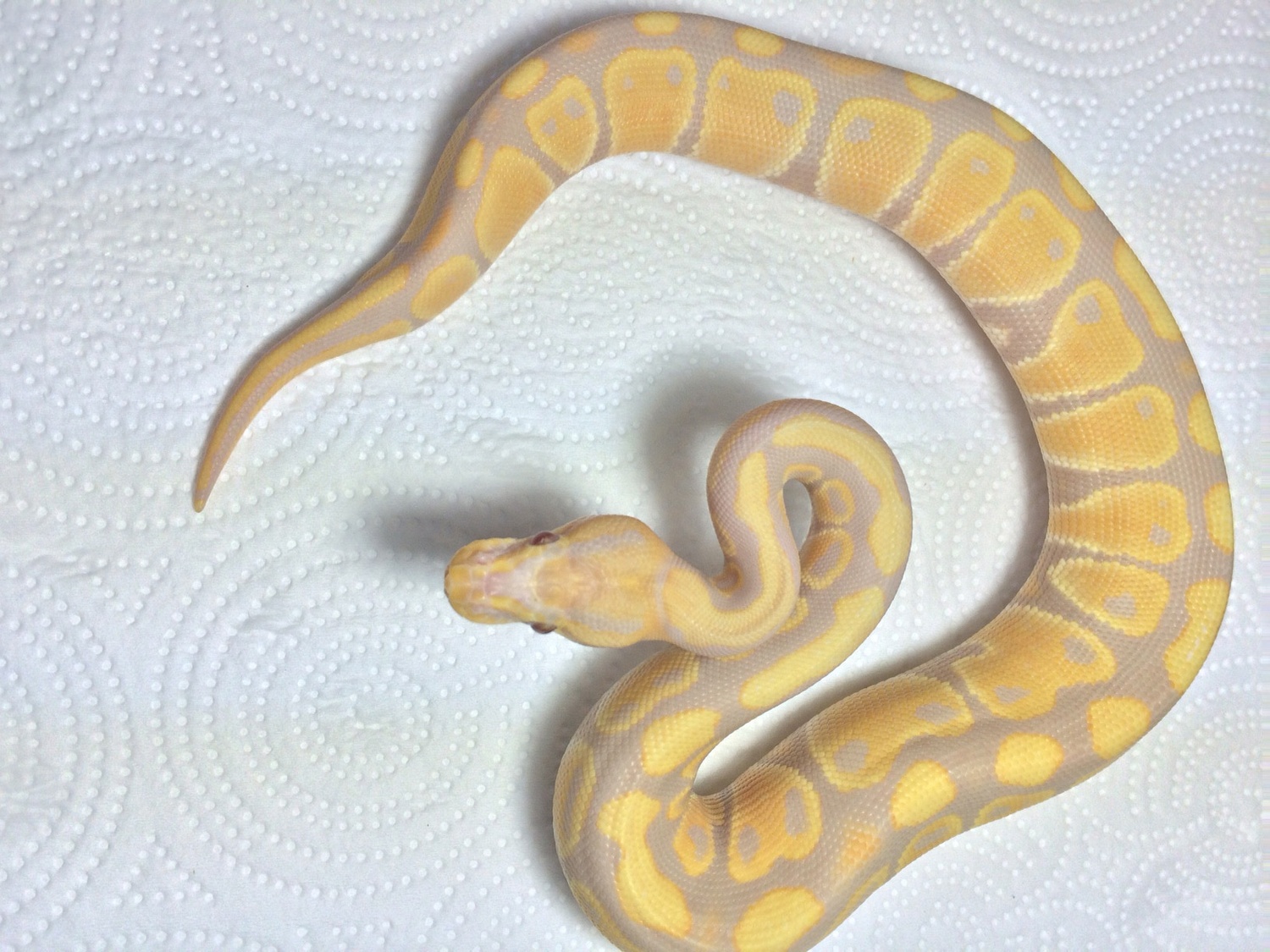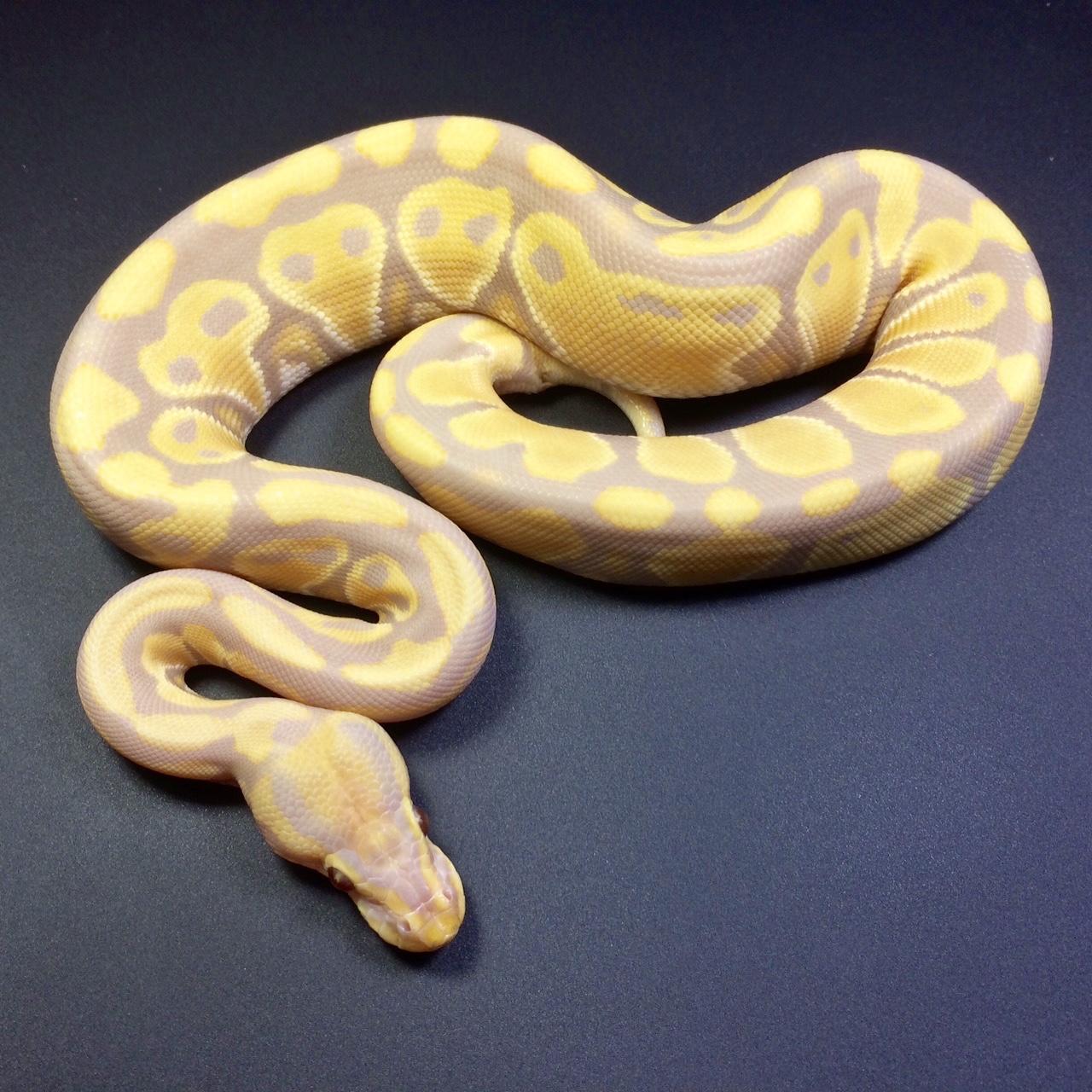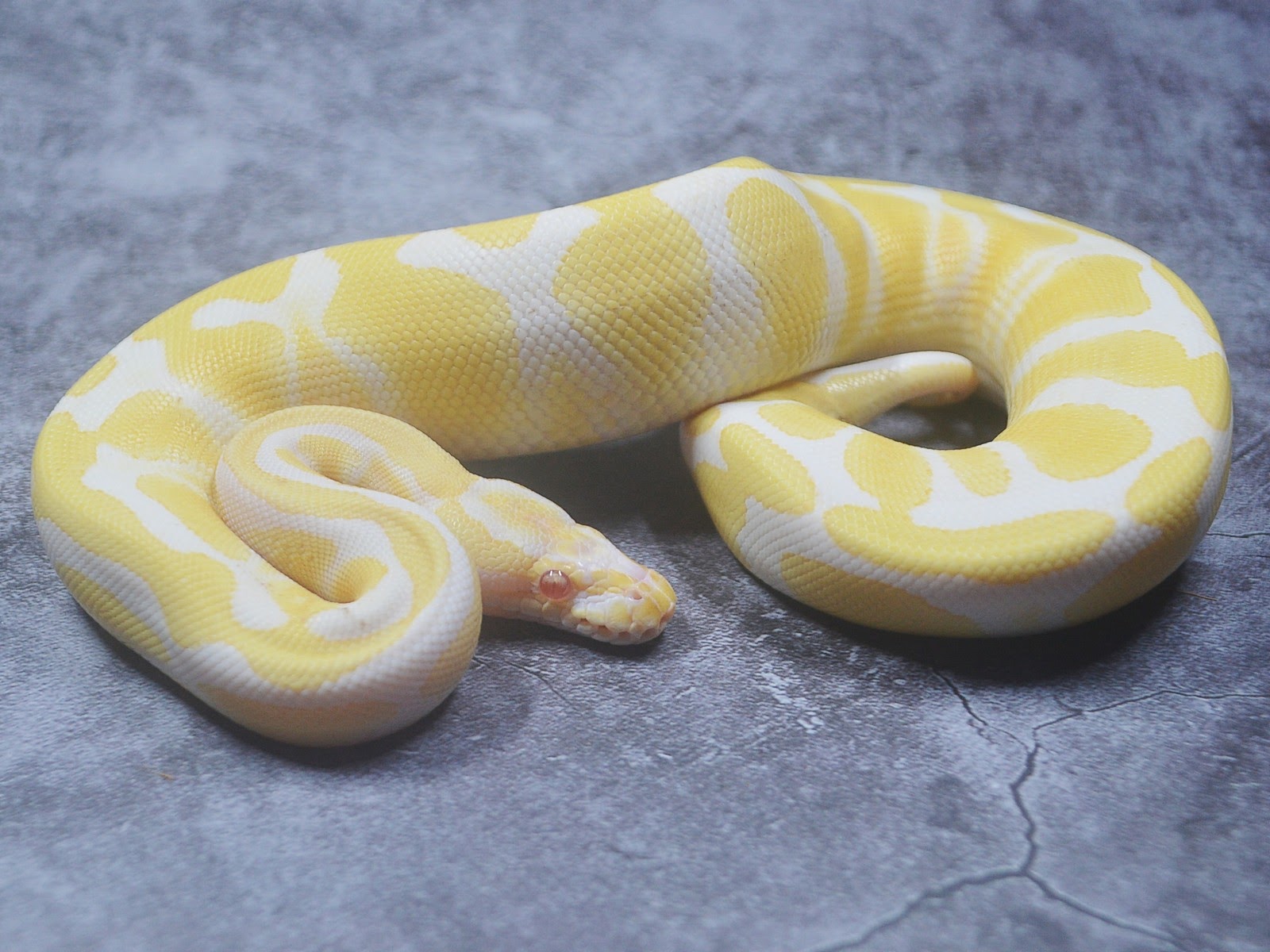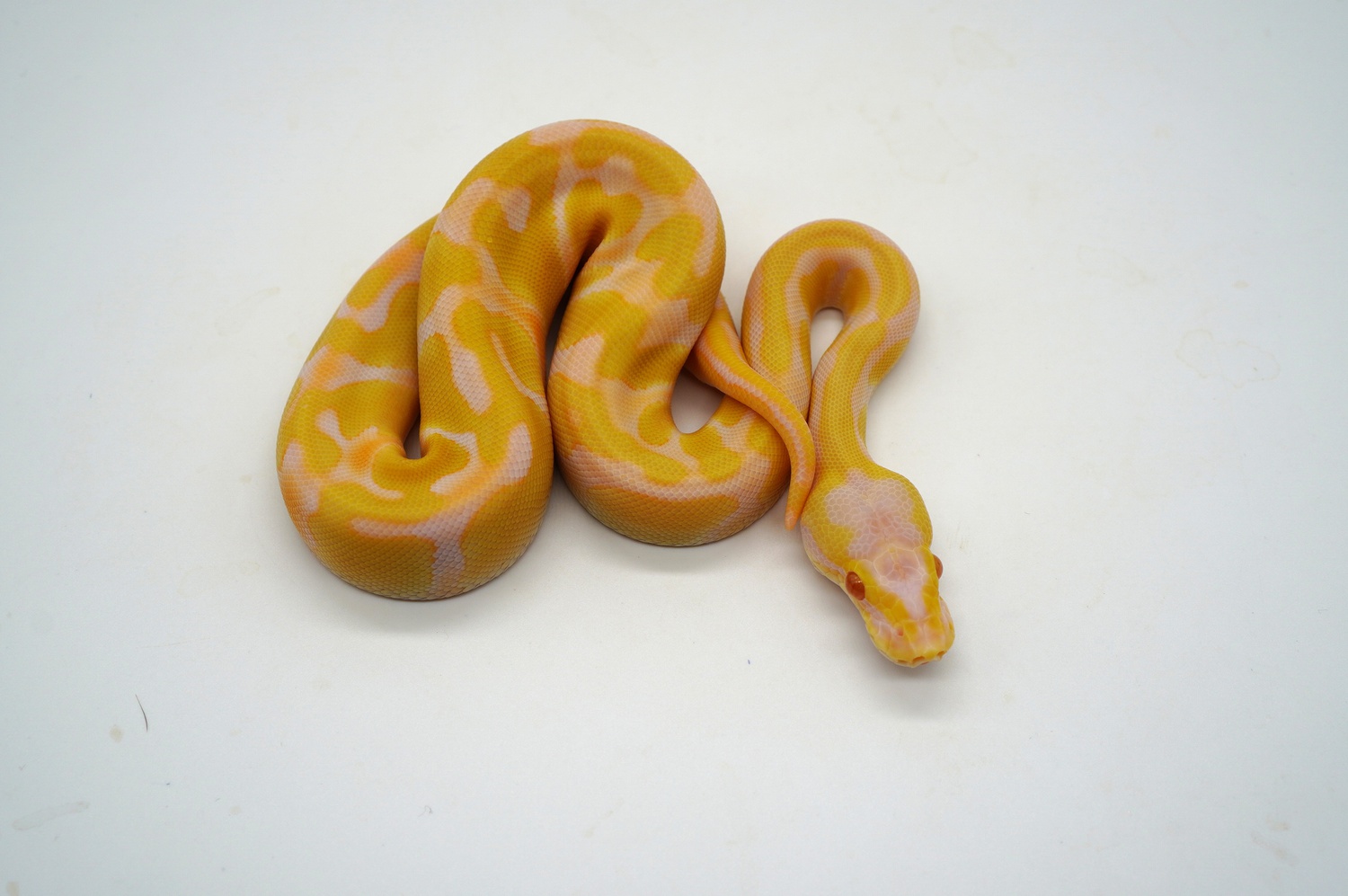Candy
Type: Recessive
First Produced By: Outback Reptiles
Complex: Albino Complex
Aliases: Toffee
First Produced In: 2008
Availability: Common
Last Updated: 2022-10-26
Do you have any suggestions or corrections for this article?
Click here to contribute feedback
About
The Candy Ball Python is a colour altering mutation that reduces dark pigmentation, leaving high contrasting combinations of yellow, orange and purplish hues throughout its body.
Areas where melanin would normally be present are instead a lilac pink color which starts to develop as the snake matures. Adult candy-balls are somewhat paler in color than juveniles. [1]
Hypothesis: Genes linked to albinism in humans are the same as genes causing color morphs in ball pythons.
Defects in melanin production in humans cause a genetic condition known as albinism (technically, ‘oculocutaneous albinism’). Albinism in humans ranges from severe to mild, depending on the genetic cause.
The genes responsible for albinism in humans are shared with ball pythons. These genes encode proteins required for producing melanin. We predicted that the genes responsible for albinism in humans were the same as the genes causing the Albino/Toffee/Candy, Lavender Albino, and Ultramel color morphs in ball pythons. [1:1]
Albino, Toffee, and Candy color morphs are caused by variants in the gene TYR. This gene encodes an enzyme called tyrosinase.
Tyrosinase is responsible for catalyzing the first step of a biochemical pathway that converts the amino acid tyrosine into melanin. Albino, Toffee, and Candy animals carry genetic variants that make the enzyme non-functional (or less functional). As a consequence, Albino, Toffee, and Candy animals produce no melanin or very little melanin. [1:2]
History
The Candy Ball is as hot as it gets when it comes to ball python mutations. The original Candy male was imported in 2006 by Outback Reptiles. The first visual Candy was produced in 2008, proving the mutation as a simple recessive trait. [2]
Appearance
Head
A deep orange/yellow crown sits on top of the Candy head, stripes cross both through and under the bright red eyes caused by amelanism.
Body
The body of the Candy Ball Python has a normal pattern, but lacks the black pigmentation, which are replaced with orange or dark yellow.
Belly
Much like the Albino, the belly of a Candy is usually completely glossy white with no spotting or smudges. The “alien head” pattern from the sides can be seen fading as the scales meet.
Tail
As with the Normal Ball Python, Candy Ball Pythons tails tend to come to an end with a thin stripe or beads of pattern.
Proven Lines
- First Produced By: Paul Angelides
- First Produced In: 2009
History:
The original Toffeewas imported through Outback Reptiles.
A genetics project found the gene where toffee/candy (along with a few other albino-type morphs) is located. They proved that candy and toffee are indeed the same mutation. [3]
Related Traits
Ball python breeders consider Albino, Toffee, and Candy to be different alleles of the same gene. Is this idea true? Yes and no. Yes, these morphs are all caused by variants in the same gene (the gene TYR). But no, these morphs do not necessarily correspond to different molecular alleles. The ‘Toffee’ and ‘Candy’ morphs appear to be caused by the same allele. We hypothesize that this morph was discovered twice and named ‘Toffee’ by one person and ‘Candy’ by another person. In addition, the morph described as ‘Albino’ is actually made of up two different molecular alleles. Some Albinos carry one allele; some Albinos carry the other allele; and some Albinos carry one copy of each allele. We hypothesize that the two alleles making up the ‘Albino’ morph produce similar color patterns and were not previously recognized by breeders as distinct. [4]
Combos
- Candino (100% Het Albino 100% Het Candy)
